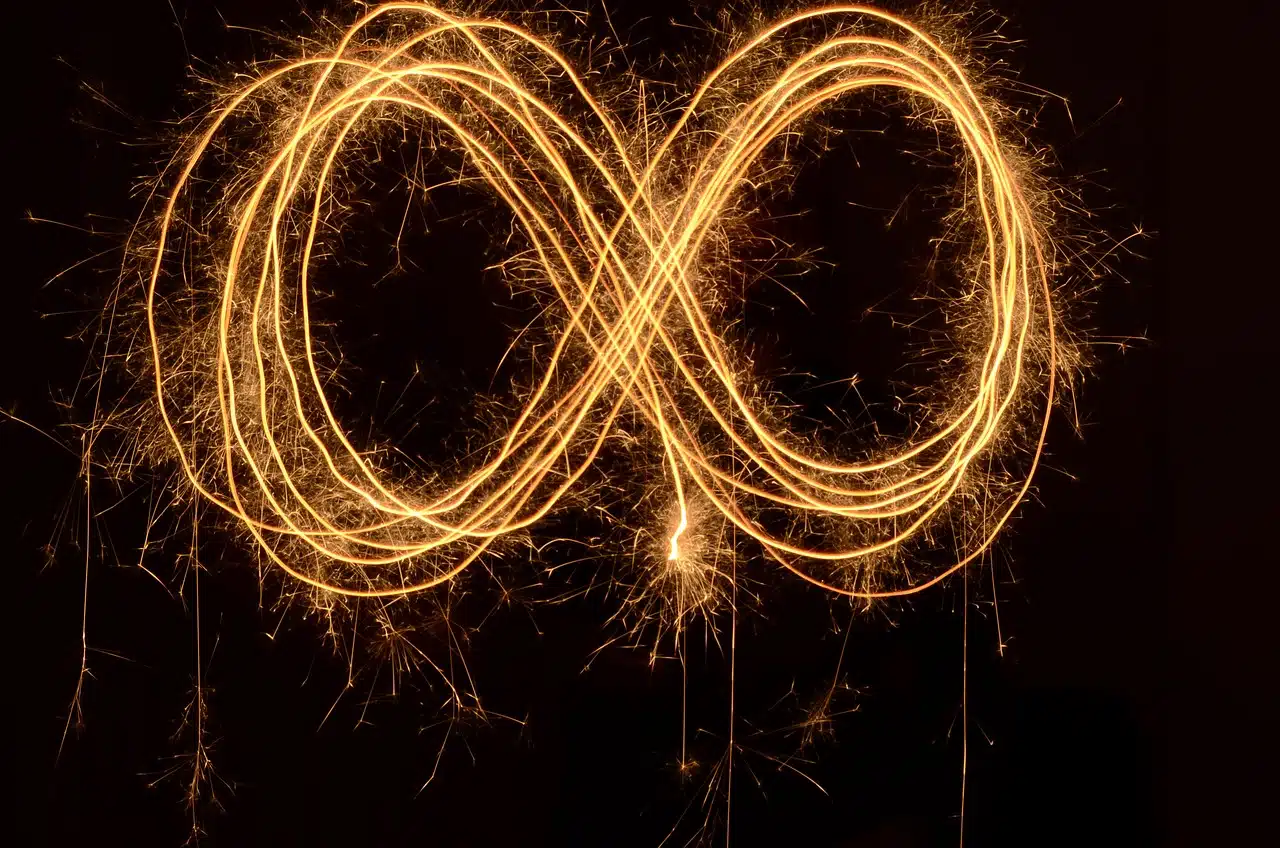
The infinity symbol resembles the lemniscate curve.
Infinity is that which does not have (and cannot have) a term or end . The concept comes from the Latin infinitus and is used in various fields, such as mathematics , philosophy and astronomy .
The infinity symbol resembles the lemniscate curve . It is not clear what its origin is, although it is believed that it could come from very ancient religious or alchemical symbols.
infinite numbers
Ordinal numbers are those that indicate the position of an element in an ordered sequence that extends to infinity . In general it can be said that numbers are always infinite, since their succession finds no limit.
In other words: if you start counting (1, 2, 3...), you must decide when to stop since, otherwise, there will always be a number that follows the last one.
The term in everyday language
In everyday language, the use of the concept of infinity does not necessarily imply something without end , but can be used to refer to something that occurs in large numbers or whose dimensions are very considerable. For example: «The possibilities that this agreement offers us are infinite» , «The engine allows infinite detail to be rendered on any device thanks to its revolutionary algorithm» .
Infinity can also be an imprecise place, either due to its remoteness or vagueness : "When he looked through the keyhole, he noticed that the hallway was lost in infinity."

Olbers' paradox focuses on the supposed infinite nature of the universe.
Paradoxes with infinity
The idea of infinity implies the existence of various paradoxes. One of the best known refers to an infinity hotel . This metaphor, proposed by the German mathematician David Hilbert (1862-1943), speaks of the existence of a hotel that can accept more guests even if it is full, since it contains infinite rooms.
As observed, saying that the universe is infinite contradicts the darkness of the sky at night: this is the basis of the so-called Olbers paradox . It ensures that if the cosmos were truly infinite, then any line drawn from the eyes of a terrestrial to the sky would have to pass at least one star, which would result in a constant brightness. The physicist and astronomer Whilhelm Olbers , originally from Germany , recorded these ideas during the 1820s .
For a paradox to exist, first of all there must be a minimum of two apparently valid arguments that, when applied to the same topic, return opposite results. In this case, if the theory of an always bright sky is considered acceptable, then this is reasoning that is opposed to that used by astronomers who accept a black space between the stars.
Already since the 17th century , long before Olbers was born, several astronomers noticed this paradox; Such was the case of Johannes Kepler , also German, who used it to complement his studies about the universe and its supposed infinite quality; In the early 1700s , Edmund Halley , from Great Britain , attempted to justify the fact that dark areas existed in the sky by proposing that, although the Universe is indeed infinite, the stars do not have a uniform distribution.
The latter's work served as inspiration for Jean-Philippe Loys de Chéseaux , Swiss, who studied the paradox and suggested two possibilities: the universe is not infinite; It is, but the intensity of the light coming from the stars decreases rapidly with distance, perhaps because of some space material that absorbs it.
Olbers , similarly, proposed the presence of some matter that blocked much of the starlight , in his attempt to explain dark spaces. Currently, it is believed that this solution is not possible, since such matter would have to heat up over time until it shines as bright as a star.
